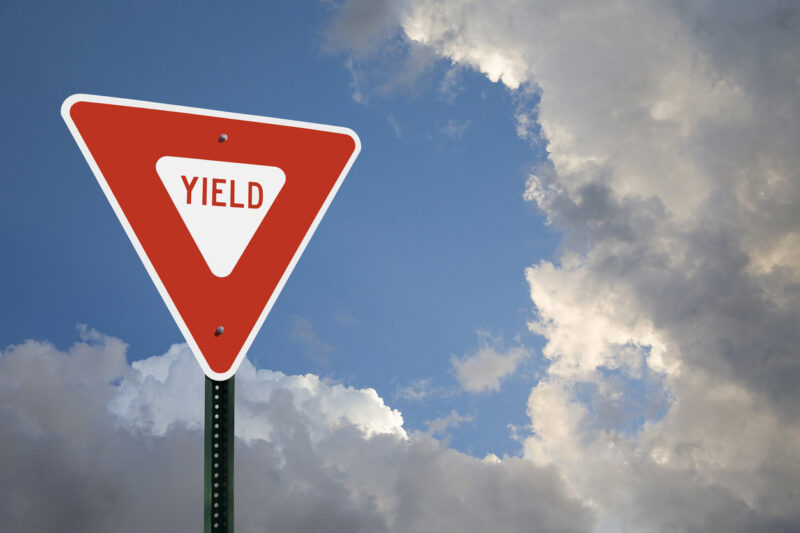Findlay Personal Injury Lawyers | April 3, 2025 | Car Accidents

It’s said so often that you’d imagine it’s something everyone understands. But what does “yielding the right of way” actually mean? Simply put, it refers to letting other drivers or road users go first when the law says they should. Here’s what you should know.
What Does Yield Mean in Driving?
In driving, yield means letting other cars, bikes, or people go before you. You slow down and prepare to stop if needed, but you don’t have to stop completely if the way is clear. When you yield, you’re following rules that help everyone stay safe on the road.
Yielding the right of way means giving priority to other drivers or pedestrians in certain situations. This is a safety practice guided by traffic laws; it prevents car crashes by making driving more predictable.
When You Must Yield on the Road
There are specific times when drivers must yield in order to prevent car accidents and avoid traffic tickets, including:
- At yield signs
- When pulling out from a driveway or parking lot
- When people are walking in crosswalks
- When cars are already in an intersection
- When turning left and cars are coming straight toward you
- At intersections with no signs or lights
- When ambulances, fire trucks, and police cars have lights or sirens on
These rules create a system that helps traffic flow safely and predictably.
Understanding Yield Signs
A yield sign is a red and white triangle that points down. Unlike a stop sign, you don’t have to come to a complete stop at a yield sign if the way is clear. However, you must slow down enough to be able to stop if needed, and if there’s traffic coming, you must wait until it’s safe to go.
When you see a yield sign:
- Slow down as you approach
- Look carefully for other cars
- Be ready to stop if necessary
- Go when it’s safe and won’t disrupt traffic
Many intersection accidents happen because drivers don’t take yield signs seriously.
Commonly Misunderstood Right-of-Way Situations
There are certain places where drivers fail to yield. Right-of-way confusion commonly happens at:
Four-Way Stops
At four-way stops, cars should go in the order they arrived. If two cars get there at the same time, the one on the right goes first.
Roundabouts
In roundabouts, you yield to cars already in the circle. Enter when there’s a safe gap.
Unmarked Intersections
Intersections without any signs or signals can seem tricky. According to the Ontario Highway Traffic Act, if two cars reach an unmarked intersection at the same time, the driver on the left must yield to the driver on the right.
Yielding To People Walking
Pedestrians are the most vulnerable people on the road and get special right-of-way protection. In Ontario, drivers must yield to pedestrians:
- In marked crosswalks
- At corners, even without marked crosswalks
- When turning at any intersection
- In school zones
Not yielding to pedestrians is dangerous and can lead to serious consequences, especially if it causes a pedestrian accident.
What Happens if You Don’t Yield?
In Ontario, the penalties typically include:
- Three demerit points on your license
- Fines, depending on the specific violation
- Higher insurance rates
But the worst consequence is causing a crash, as small mistakes can lead to serious injuries or even deaths.
Who’s at Fault in Right-of-Way Crashes?
Sometimes both drivers think they had the right of way, which is why crash investigations look at many factors. If you’re in a crash where the right of way is disputed, collecting evidence at the scene is very important. Take photos, get contact information from witnesses, and write down everything you remember.
Know the Rules for Yielding the Right of Way
Knowing the rules on when to yield is important for road safety. It allows everyone sharing the roads to know what to expect from each other and contributes to an overall safer experience on the roads.
Contact Our Car Accident Law Firm in Ontario, Canada
If you need legal help with a personal injury case, contact the team at Findlay Personal Injury Lawyers to schedule a free initial consultation today.
Findlay Personal Injury Lawyers – Hamilton, ON
20 Hughson St S #510, Hamilton, ON L8N 2A1
(905) 522-9799
Findlay Personal Injury Lawyers – Brantford, ON
325 West St #102a, Brantford, ON N3R 3V6
(226) 401-5433
Findlay Personal Injury Lawyers – Burlington, ON
2349 Fairview St, Burlington, ON L7R 2E3
(289) 512-0829
Findlay Personal Injury Lawyers – St Catharines, ON
55 King St Suite 207, St. Catharines, ON L2R 3H5
(289) 301-9496
